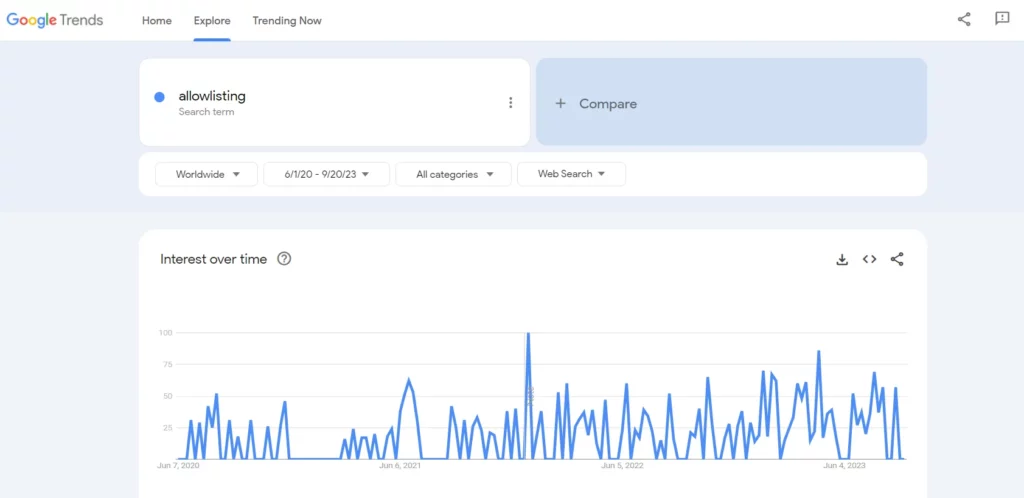If you’ve had the experience of joining a meeting and having someone use the term allowlisting, it may have taken you a second to catch up to what was going on. Depending on the situation, you may have even inquired about the term. What is allowlisting? When it comes to allowlisting vs. whitelisting, what’s the difference? If allowlisting is the same as whitelisting, what is why not just use whitelisting instead?
Lots of questions. Here are the answers.
What Is Influencer Allowlisting (formerly whitelisting)?
In influencer marketing, allowlisting is a paid strategy that allows you to turn organic influencer content into paid ads. The important thing to note about these paid posts is that they are run through the influencer’s account – not the brand account.
By creating paid ads from an influencer’s organic posts, you can increase the reach of your sponsored content. AND you’re able to target your desired audience more accurately and get more eyes on campaign content. That’s the simple definition.
So, allowlisting fits in as part of your influencer marketing strategy to increase the reach of your campaign.
Why Are We Switching from Whitelisting to Allowlisting?
It’s true that the words “whitelisting” and “allowlisting” are synonymous. But the word “whitelisting” isn’t a socially neutral term, not from its inception.
“Whitelist” was birthed after the word “blacklist” was adopted in the early 17th century to mean “a list of persons who are disapproved of or are to be punished or boycotted; a list of banned or excluded things of disreputable character.” That’s according to Merriam-Webster Dictionary.
If you remember your American history, you may recall that the term was widely used in the 1940s and 1950s to single out individuals whose “opinions or associations were deemed politically inconvenient or commercially troublesome” (Source: The First Amendment Encyclopedia).
Back then, being blacklisted often meant losing your job and essentially becoming unemployable. Today, it’s highly probable that a lot of those same blacklisted people would be considered thought leaders, disruptors, whistleblowers, and change agents. Just to give this a bit more perspective.
Blacklisting was an oppressive tactic used to silence people. It was designed to isolate and condemn those who put forth ideas the so-called powers that be didn’t agree with.
Whitelisting is the other side of that socially-charged term. According to the Oxford Dictionary, a “whitelist” is “a list of people or things considered to be acceptable or trustworthy.”
But Whitelisting Isn’t About Race!
“Whitelist” is one of those terms that we’ve folded into our vocabulary without considering its origin. In this case, “whitelisting” not only has an unsavory history but it’s charged with additional connotations that can be inflammatory. Aspire IQ referred to the term as a microaggression, and we think that’s spot-on.
Microaggressions are often indirect, subtle, and sometimes unintentional acts of discrimination against historically marginalized groups. Meaning, that although “whitelisting” wasn’t created to be used as a racially-charged term, it reinforces stereotypes around race and strengthens the chains of systemic racism.
Blacklisting and whitelisting have always been terms designed to exclude, preclude, prohibit, demonize, and degrade one group (usually a group of people) while bestowing upon another group trust, esteem, benefits, opportunities, access, resources, and preferential treatment.
Why This Matters to The Shelf Team
We value people.
Our scrappy little group of analysts, strategists, and creatives stretches across the globe, and we’ve grown as quickly as we have because we understand the value of people, talent, and diversity.
It may seem that switching from “whitelisting” to “allowlisting” is a small act. But for us, it’s another step in the direction of a more equitable industry. And while history is made with big, bold, moves, tomorrow is carefully crafted by the small intentional actions we take today that constantly move us toward a better future.
Is the Industry Adopting the Term “Allowlisting”?
Yes! Slowly, but surely. There are actually a handful of new terms floating around. Here at The Shelf, we were leaning toward replacing whitelisting with the word amplification, but the industry seems to be moving toward allowlisting. You may also see it as permission listing. Replacements for blacklisting include deny listing and block listing.
The industry is still in the ebbs-and-flows stage of changing language around terms that are not socially neutral. You can see in this Google trends chart that “allowlisting” is having longer periods of interest in search queries now than it did three years ago. That’s good news. But it also means that when it comes to allowlisting vs. whitelisting, you’ll hear and see both for the time being.

Super Fuzzy Math on This to Drive It Home
For instance, estimations put Google search queries for the term “whitelisting meaning” around 22K searches per month, and Google’s knowledge panel automatically displays the cybersecurity definition of whitelisting as the answer. That’s important because it lets us know that most of the time when people search for that term, they’re inquiring about the use of the term in the digital space.
Estimations of Google search queries for the term “allowlisting” are about 3600 per month. And searches for “allowlisting vss whitelisting” are just under 400 per month.
In a super fuzzy math scenario, that would equate to about 85 percent of folks who are searching for information around this particular type of filtering and segmenting process are still searching using the term “whitelisting”. Another 14 percent or so are searching for “allowlisting”, and 1.3 percent of Google searchers are curious about how the terms fit together.
Making “Allowlisting” the New Industry Standard Will Take Some Time
For many digital professionals, making the shift from “whitelisting” to “allowlisting” will mean updating marketing assets to reflect the change. It means putting out content that explains why you’re making the shift. It means educating clients on the reasons and gently nudging them to make the shift as well.
Then there’s SEO. When it comes to search visibility, articles, and blogs still have to include both words in order to increase the chances of content being displayed in the search results because most people are still forming queries around the term “whitelisting.”
It means if you’re already ranking for the term “whitelisting”, you’re going to have to tie the terms together in order to keep search engines from demoting or removing your content from search results altogether.
It’s going to take time. But the time and effort you invest in making this change is worth the payoff of clearing a path for more open, authentic, and inclusive conversations.







